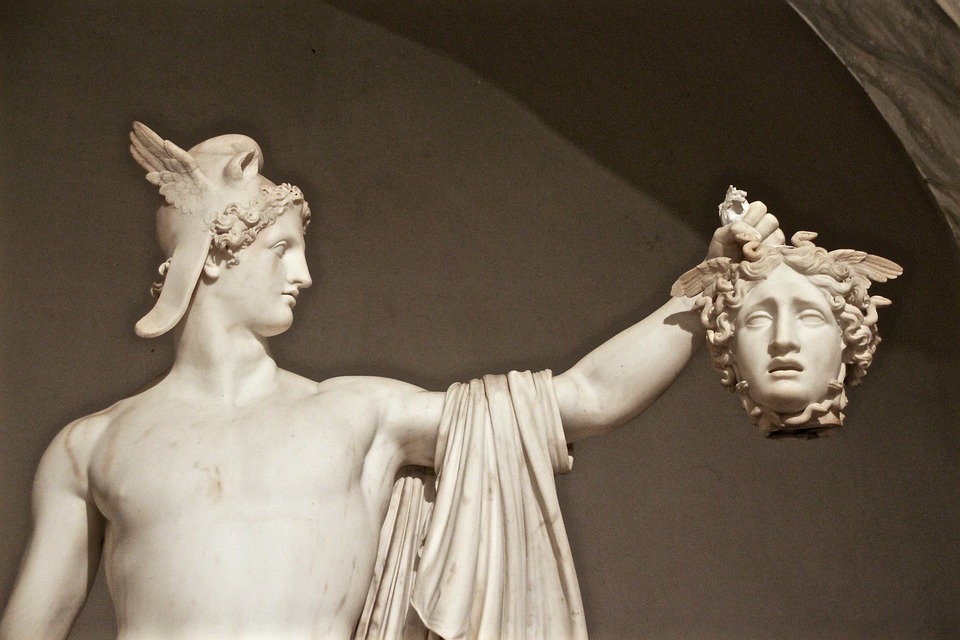
And How It Is Interpreted Today
A myth is a story about gods, often told in an attempt to account for the beginning of the world, such as in the creationist stories in Abrahamic and other religions. Myths explore fundamental events, and exemplary deeds of the multiple gods in Greek and Roman times. The Swiss psychologist Carl Jung saw the ancient gods as archetypes of human behavior, and mythology as the personification of subconscious forces at work in the human psyche, mixed in with real events. As such a myth is necessarily cultural.
I have some favorite myths, such as Narcissus, Persephone, Demeter, and Pandora, but I am going to write about the latter just now, as she has been tapping at my mental window in recent times. A sure sign that she needs to come in. You could call it a case of synchronicity, a Jungian term giving a spiritual dimension to the repetitive event that is otherwise seen as coincidence.
One of the interesting facts surrounding the Pandora myth is that the container, was, in the original story, a large storage jar; but the word was later mistranslated as “box.” I find this fascinating, as the error has allowed for a more erotic interpretation to be placed on the container: linking it metaphorically to that of a woman’s womb or private parts.
This change highlights for me the negative erotic value placed by religions on the female as seductress. She has been leading astray her male cohorts, from the time of “Eve the Temptress” and Medusa with her snakes’ hair, right up until today in many religious stories.
What happens to Pandora and why does it happen? The narrative was first written as a poem by Hesiod in 700 BC. On their wedding day, Zeus gave Pandora a small box but said she must never open it. As Pandora was created to be curious, she eventually could not resist and opened the box. Out of the box came horrible evils such as sickness, death, poverty, and sadness that were inflicted on humans.
So how is the myth interpreted today? Many see it as meaning Be Careful What You Wish For, and the idea of opening a can of worms. There seems to be some truth in this. However, what was left in the box afterward was said to be Hope. Surely this points to a more positive meaning: that of celebrating human ingenuity and resistance in the face of trials and threats.
And there is a more personal meaning, for me, to this myth in today’s society. As a woman in a patriarchal society, I prefer to use a Jungian-type interpretation of the myth, linked to a post-women’s Liberation time and motif. In this case, Pandora’s box represents hope, coming down to us through the ages, in the guise of symbols. Women are on the move! Yet a gentle spirituality à la Carl Jung still persists and embraces us in fresh mythology.
I believe that there is now a perfect place for Pandora and her “womb/box” to fit: as a metaphor alongside Jung’s collection of archetypes. She represents “Woman in Search of Self”, changing throughout history into a stronger persona, as she evolves.
Pandora is, for me, a modern woman “letting off steam”. She is expressing her anger at being subservient for so long. Disobeying her husband’s commands has led to her coming into her own. Possibly she will have to suffer the agony of a divorce or some other emotional hardship. But the experience will result in freedom from the past and a sense of empowerment pointing to a new state of being.
The relationship of a myth to us readers and writers today is still as important as ever, even more so in this modern age when so much is changing and not always in a good way. I believe that Jung’s ideas on the Feminine — how we are composed of the anima and the animus (male and female aspects) — has presaged the current age when gender has become more fluid and women are becoming stronger.
Take Away: Here I show the many sides of the myth of Pandora’s Box, its ancient history and its negative and positive interpretations. What I find interesting is that myths, such as Pandora’s Box, still have relevance to today’s culture. Women in the 21st Century are on the move and becoming less vulnerable to threats and fears that the contents of the box might represent.

